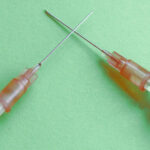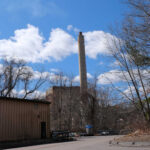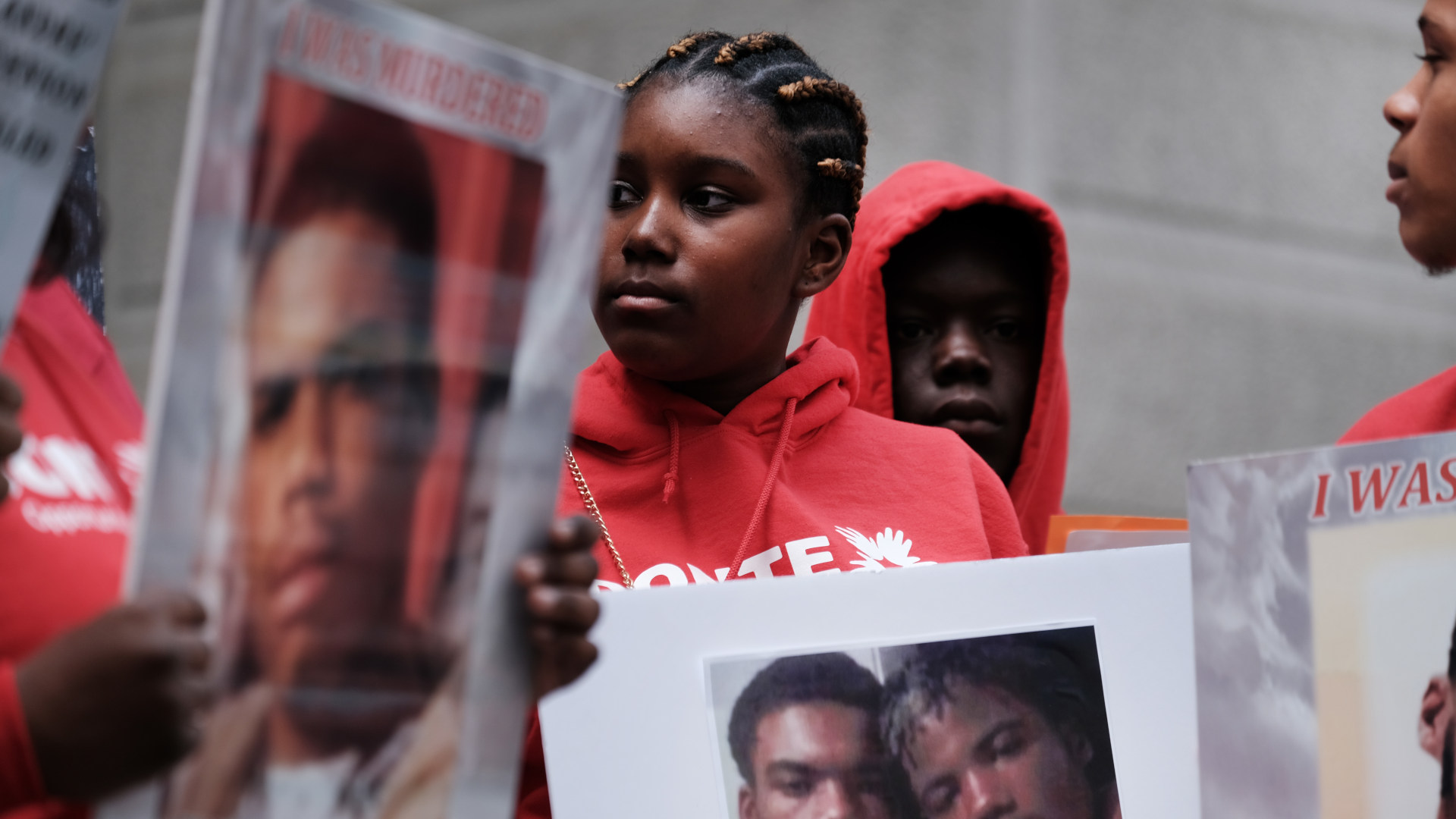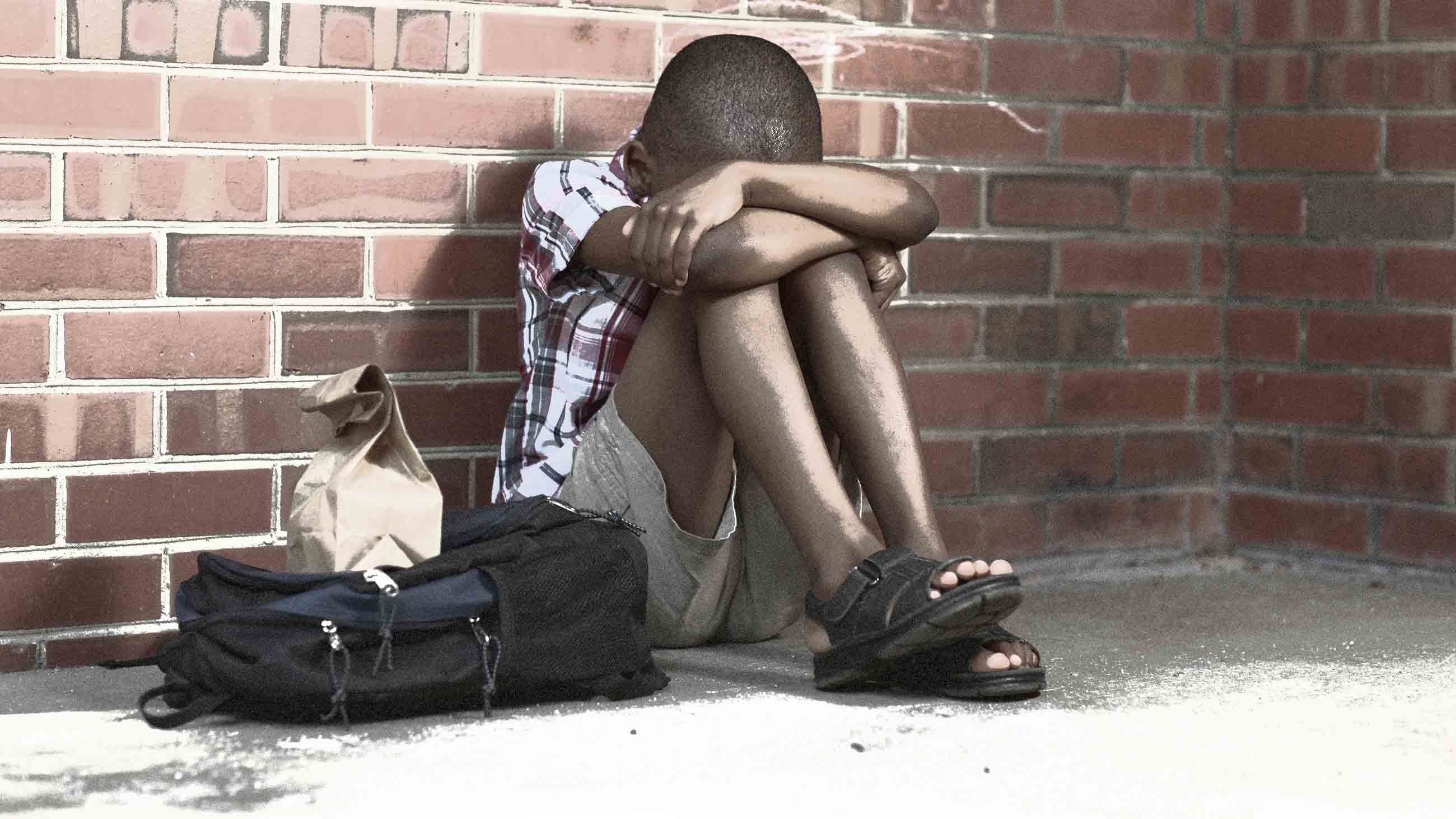Why Some Mass Shootings — And Their Victims — Go Uncounted
Early in the evening of Feb. 23, seven people were shot outside a grade school in northwest Philadelphia. Three men arrived on the scene in a gray Hyundai, and according to several reports, emerged from the vehicle and opened fire, striking five teenage boys, a 31-year-old woman, and her 2-year-old daughter. The injured were rushed to nearby hospitals.
It was a brazen act in a city that has experienced higher rates of gun violence since the beginning of the pandemic. Philadelphia’s gun violence spiked in 2021, when more than an estimated 2,330 people were shot, according to data from the city’s Office of the Controller. In comparison, nearly 1,500 people were shot in Philadelphia in 2019, before the first Covid-19 cases were confirmed in the United States.
The increase in firearm violence correlates with stay-at-home orders meant to slow viral transmission, said Jessica Beard, a trauma surgeon at Temple University Hospital, which describes itself as the busiest trauma center for knife and gun violence cases in the state.
Gun violence not only spiked during the pandemic, but according to research into firearm violence and the Covid-19 pandemic, mass shootings have increased as well. And while young African American men continue to experience a disproportionate share of firearm-related injuries and fatalities, African American children now make up a larger number of the injured in several cities.
As mass shootings have become more frequent by some measures, the locations, victims, and perpetrators can challenge established media narratives about these types of shootings and the nature of gun violence, some researchers say. African American women and children are often injured in neighborhood mass shootings, for example, although these incidents do not always fit some researchers’ definitions of “mass shooting” — and news outlets don’t always report on them as such.
Even before the pandemic, the U.S. led high-income countries in firearm-related fatalities. Then, in 2021, almost 49,000 people in the U.S. died from gun-related injuries (54 percent of which were suicides) — the highest number on record, and an increase of 23 percent since 2019. The cost of this violence is staggering. Firearm injuries cost the United States an estimated $557 billion per year, according to research by Zirui Song, an associate professor of health care policy at Harvard Medical School.
“I don’t know that we’re ever going to know exactly why gun violence spiked during the pandemic,” said Beard. She suspects a combination of stressors contributed to the problem as people lost access to schools, safe green spaces, health care, and social services.
People who were unemployed, or who experienced food and job insecurity, were particularly hard hit, and some struggled to access to mental health care, said Jeffry Nahmias, a trauma surgeon at the University of California, Irvine Medical Center.
But while several papers say that firearm violence increased during the pandemic, with a greater number of mass shootings, how mass shootings are defined could change some of those figures.
A mass shooting is often defined as an event in which four or more people at the same location are injured by gunshot, but there is no universal definition. Government agencies have employed varying definitions over the years. There are differences among well-used media databases as well. For example, USA Today tracks fatal mass shootings — defined as the killing of four or more victims within a 24-hour time period — but does not register incidents in which multiple people were wounded but did not die. Mother Jones also only tracks fatal shootings — similarly defined as four or more victims — but excludes shootings connected to gang activity and intimate partner violence. (In a 2015 opinion piece for the New York Times, Mark Follman, an editor at Mother Jones, said the goal of these narrow parameters was to focus on “seemingly indiscriminate attacks.”)
With these exclusions, there were 12 mass shootings last year, a number that includes events like the shooting at a supermarket in Buffalo, New York; the shooting at an elementary school in Uvalde, Texas; and the shooting at Club Q in Colorado Springs.
This is almost surely an undercount, said Beard. “What ends up happening is that people who get shot in cities like Philadelphia don’t get to be considered to be part of mass shootings,” she said. While working at Temple University Hospital, she said she often sees, “two, three, four patients presenting together to the trauma bay and receiving care at the same time. So, from my perspective, this is happening much more frequently than is recognized.”
Beard co-authored a 2022 study that lends weight to her observations. The study used data from the Philadelphia Police Department’s registry of shooting victims to assess shifts in gun violence following containment protocols. Critically, the study used a definition of a “mass shooting” that reflected the reality of urban trauma centers: The injury of four or more people by firearms, occurring within 100 meters and within one hour. Using this broader definition, researchers found the rate of shootings almost doubled, from 1,324 to 2,180 people per year. The proportion of mass shootings also increased by 53 percent.
This study’s findings challenge the popular media narrative of a lone-wolf gunman who usually shoots at random in a public setting, said Beard. “You can understand why law enforcement might be interested — or people who are involved in criminology might be interested — in that lone shooter, right? Because that’s the way that they think of crime,” said Beard. Meanwhile, local hospitals, along with traumatized communities, are often faced with something quite different, what some researchers refer to as “neighborhood” or “private” mass shootings.
A 2022 paper found that nationwide, “public and private mass shootings appeared to increase after the national emergency declaration” in the early months of 2020, “and each spiked during the week of July 4th.” Like Beard’s study, this one used a broad definition of a mass shooting where four or more people are shot, not including the perpetrator, “at the same general time and location.”
“Although public mass shootings are those that typically garner the most attention, mass shootings do not only occur in such public spaces,” wrote the authors, criminologists Jaclyn Schildkraut of the State University of New York at Oswego and Jillian Turanovic of Florida State University.
“Neighborhoods and even private residences have experienced such tragedies, yet these mass shootings rarely make national headlines.”
The demographics of gun violence victims also shifted during the pandemic. Beard’s paper, for example, found that after Philadelphia announced its stay-at-home order, the proportion of women shot increased by 39 percent while the proportion of children shot increased by 17 percent. Additionally, African American women and children were more likely to experience gun violence than women of any other race or ethnicity.
Beard told Undark that those victims are often bystanders. “Many of my patients express that they were not the target of the shooter and that they were walking down the street and, in one case, on the way to the dentist,” said Beard. Understanding gun violence as a public health challenge often requires acknowledging unconscious bias and stereotypes about people who are victims of gun violence, she added. It’s easy to accept that children killed in school shootings are innocent victims, she pointed out. But the media and even researchers may find it harder to acknowledge that “folks in North Philadelphia are innocent victims” too.
“What we’re witnessing with the violence is just a symptom” of a larger problem, including a lack of resources, said Glenn Ellis, a Philadelphia-based bioethicist. Ellis, who is a former fellow at the Harvard Medical School Center for Bioethics, was not involved in Beard’s research project.
Additional research suggests that the demographics of gun violence victims have shifted nationwide. In 2020, gun violence became the leading cause of death for children and adolescents. Motor vehicle accidents and crashes — which had been first for many years — are now the second leading cause of death.
One recent study of gun violence in four major U.S. cities found that African American, Latino, and Asian children are all at elevated risk, and that those racial and ethnic disparities increased during the pandemic. African American children were much more likely to be shot than any other demographic, up to 100 times more likely than their White peers. More than 2,600 shootings were captured in the dataset.
The lowest rates of gun violence were seen in White children, whose rates did not increase during the pandemic: Out of every 100,000 White children, 0.54 were shot. In contrast, 21 out of every 100,000 non-Hispanic Black children were shot.
These stark racial disparities were echoed in a study published on May 9, which found that among adults living in Chicago, Black and Hispanic residents reported increased exposure to firearm violence compared with White residents. Specifically, by the age of 40, over 7 percent of Black and Hispanic residents had been shot, compared with 3 percent of White residents. And more than half of Black and Hispanic residents had witnessed someone being shot, compared with a quarter of White residents.
Support Undark MagazineUndark is a non-profit, editorially independent magazine covering the complicated and often fractious intersection of science and society. If you would like to help support our journalism, please consider making a donation. All proceeds go directly to Undark’s editorial fund.
|
“Particularly for Black and Hispanic males growing up in urban neighborhoods, seeing someone shot or being shot before even reaching age 20 years is pervasive,” the authors wrote. Exposure to such stressful circumstances, they noted, can have long-term effects, such as accelerating the aging process and increasing one’s susceptibility to disease.
Researchers now have a better understanding of gun violence before and after the pandemic. But public health solutions — as well as arrests and prosecutions — continue to be elusive. As of mid-May, for example, there have been no news of reported arrests in the mass shooting outside the Philadelphia grade school.
Two-thirds of African American children in this country are raised by single mothers, said Ellis, and research now shows that women and children are increasingly vulnerable to gun violence. Knowing this, he continued, “we have to say, ‘How are we going to mitigate that?’”











